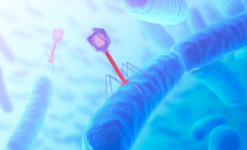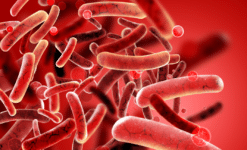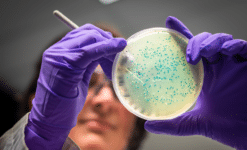
We have seen in the first part of our Phage therapeutics Series that Phages, these viruses that can infect and provoke the death of specific bacteria, can be developed as medicinal products in multiple health applications, such as the treatment of resistant bacterial infections.
From the very early stages of development of a Phage medicinal product, the developer must set-up an adapted manufacturing system and ensure the quality of their products. Some methods and good practices for manufacturing and quality are well established in the pharmaceutical environment. These are not specifically adapted to Phage medicinal products, especially considering the innovative nature of these products, for which scarce guideline is available.
In this second part of our Phage therapeutics Series, we are going to dive into the manufacturing activities of Phage medicinal products to understand the specific constraints associated to these products and the adapted approaches that can be put in place as part of their development.
Adapted approaches for the manufacturing of Phage medicinal products
Phages are complex biological medicinal products, as are medicinal products such as viral vectors and cell therapies. As such, specific challenges in their development must be anticipated. Common challenges when working with complex biologics include determining (an) appropriate preclinical model(s) for pharmacokinetic/pharmacodynamic studies; establishing adapted cell banking approaches to address the difficulty to obtain a cell line acting as a production host with adequate purity and stability to manufacture consistently clinically relevant drug product dose.
Phage medicinal products differ from other medicinal products in various terms and also bring along specific challenges in their development and notably for manufacturing. Two manufacturing pitfalls in particular are frequently observed:
- A first phage-specific critical issue relates to the establishment of the Master Phage Bank[1]. When establishing the phage bank, phage characteristics such a quantity or Multiplicity of Infection (MOI) should be well defined in order to evaluate the size of the Master Phage Bank in accordance with subsequent manufacturing steps requirements. Thus, appropriate methods for assessing phage count should be implemented. These can be based on nucleic acid detection, functional assays or microscopy.
- A second example of phage–specific critical quality issue relates to endotoxin content in the finished product. Phages are isolated from bacteria: due to the nature of their harvest, after bacterial lysis, a huge amount of bacterial endotoxin is released and remains in the purified phage vials forming the Master Phage Bank. Endotoxin content is a critical adventitious agent, therefore adapted approaches must be set-up to mitigate the risk associated with this endotoxins in order to address regulatory safety requirements[2]. One of these approaches relies on dilutions steps in the manufacturing process, allowing to decrease endotoxin concentration to a level in accordance with the regulatory limit. Dilution modalities need to be defined according to the manufacturing process and the clinical dosage of the phage drug product.
- It is worth noting that amid the initiatives launched in the EU for exploring new approaches for phage therapies, such key development challenges have been captured in EMA consultations (Series part 1) as part of the main quality considerations that need to be taken into account for phages manufactured as human medicinal products. Specifically, the selection, characterization and quality control of starting materials (i.e., phage banks and bacterial cell banks) and control of product-related impurities and other contaminants are among the main quality considerations that need to be taken into account for these phages. These considerations should be captured in a future guideline for bacteriophage products for the treatment of infections and infectious diseases.
In addition to these examples, additional issues must be taken into account for the development of phage medicinal products. Among them are:
- control of processes,
- potency assay development,
- quality requirements for investigational phages products.
Furthermore, complementary manufacturing considerations may arise in specific contexts, in light of the specific characteristics of a given Phage medicinal product and of the process through which they are produced.
- As an example, Phage therapy medicinal products can consist of genetically modified phages, e.g., when their genome contains sequences coding for detrimental genetic factors such as antibiotic resistance determinants, toxins or lysogeny modules. The genetic modifications made on such phages must be properly described, e.g., with methods used for the modification; description of the insert and/or vector construction; purity of the insert from any unknown sequence; etc. Additionally, the effects of these modifications must be characterized, e.g. phenotypic characteristics; level of expression of the new genetic material; activity of the expressed protein(s); stability of the organism in terms of genetic traits; etc. Whether the product is intended to be released in the environment or whether specific containment measures are put in place to limit the contact of the genetically modified micro-organism (GMM) with the general population and the environment also imply adapted measures to be established notably for manufacturing, e.g., establishing techniques for the identification and detection of the inserted sequence and vector; keeping workplace and environmental exposure to the lowest practicable level; exercising engineering control measures; testing and maintaining control measures and equipment; design facility and flows minimizing cross-contaminations etc.
- As another illustration, where a Phage adaptation process is used to direct phages to evolve in order to increase their potency against (a) clinical isolate(s), the increased potency of the adapted Phage medicinal product against the isolate may serve for identification test on the final product.
Adapted development approaches must be set-up by developers following a risk-based approach and pending specific guidance and recommendations to be published by regulators. Multiple consultation forums with the EMA, EU Competent Authorities and the FDA may be leveraged from early stages of development and along product development life to validate the anticipated development strategy, including in terms of early quality development, and to secure the path forward.
Conclusions
While to date limited guidelines are available to drive the development and manufacturing strategy for Phage Medicinal Products, further guidance will come in the future, with the EU Bacteriophages Working Party (BACT WP) elaborating recommendations for bacteriophage potency determination, and with finalization of the EMA Concept paper on the establishment of a Guideline on the development and manufacture of human medicinal products specifically designed for phage therapy. Such guidelines are key to define a common ground of essential principles that developers can apply in line with regulator’s expectations. Still, it is acknowledged that a degree of flexibility remains necessary commensurate with the complex approaches currently employed in this field.
Until maturing of the framework in place to provide adapted orientations for development of Phage medicinal products, developers must continue to elaborate adapted and creative strategies. Understanding and leveraging approaches employed for the development of other complex biologics such as viral vectors and cell therapies is key to build an adapted development strategy. Such approaches must also be considered in light of the specific characteristics of the products in development, which can drive further development constraints and requirements to comply with, e.g. considering whether a Phage medicinal product is produced through genetic engineering.
As highlighted in the previous post of this series, it is critical for developers to be able to engage with regulators to define the best approach to tackle their development challenges. Some forums can be particularly relevant to consider to address hurdles in Phages development and manufacturing in early stages. For example, in the US, developers of Phage-based solutions may seek advice from FDA CBER through Advanced Technologies Team (CATT) meetings and Initial Targeted Engagement for Regulatory Advice on CBER/CDER ProducTs (INTERACT) meetings. These forums have the advantage of allowing establishing a regulatory dialogue from very early stages of development.
Leveraging the key regional resources available to drive the development of Phage medicinal products and establishing a lean global development approach are essential to support a global development.
References:
[1] Tanir T, Orellana M, Escalante A, Moraes de Souza C, Koeris MS. Manufacturing Bacteriophages (Part 1 of 2): Cell Line Development, Upstream, and Downstream Considerations. Pharmaceuticals. 2021; 14(9):934. https://doi.org/10.3390/ph14090934
[2] Bonilla et al. (2016), Phage on tap–a quick and efficient protocol for the preparation of bacteriophage laboratory stocks. PeerJ 4:e2261; DOI 10.7717/peerj.2261. untitled (nih.gov)
Published on: June 11, 2024






